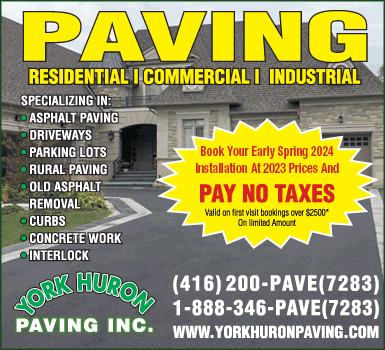Thousands of new homes, lowrise apartment blocks coming to Toronto’s main streets
Thousands of new homes, including lowrise apartment buildings, can potentially be built on neighbourhood main streets across Toronto thanks to city council’s latest effort to boost housing supply.
Council voted 21-3 Thursday to let developers erect buildings of up to six storeys and 60 units, as well as townhouses, on specific major roads without having to apply for rezoning applications or minor variances. Seeking those permissions added cost and time to projects on thoroughfares such as Islington Avenue in Etobicoke and Brimley Road in Scarborough, making some development unfeasible.
City staff said erasing those requirements will unlock development on more than 31,000 lots across Toronto. Staff originally proposed allowing up to 30-unit apartments but agreed with a council recommendation to double the limit to make more developments financially viable.
Some suburban councillors tried to exempt some streets from the change, arguing density would overwhelm neighbourhoods dominated by single-family homes. They were all outvoted as Mayor Olivia Chow and housing chair Coun. Gord Perks said all parts of the city must help end the crisis that has made renting and buying too expensive for many Torontonians.
“By building this way we’re saying ‘Yes’ to more neighbours, we are saying ‘Yes’ to newcomer families … that’s how we can build more than homes,” Chow said. “We are building dreams because we are building hope. If we don’t do that it’s very difficult for people to be able to stay in Toronto.”
It’s the latest in a series of policy changes aimed at forcing more and different options in neighbourhoods long dominated by single-family homes. Council has greenlighted new housing forms like laneway and garden suites, and last year approved permission to build multiplexes citywide.at
Councillors Stephen Holyday (Etobicoke Centre), Vince Cristanti (Etobicoke North), Jon Burnside (Don Valley East) and Paul Ainslie (Scarborough-Guildwood) all failed to exempt streets from the change.
“The biggest concern I have with this policy is the risk to the character of the established communities,” said Crisanti who tried to exempt a host of busy streets in his ward, including Kipling Avenue and Steeles Avenue West. Densification is already “drastically” altering the “core characteristics” of neighbourhoods, warned the councillor whose ward has had a shrinking population since at least 2011.
Holyday, who tried to get council to scrap the entire effort, said his residents view it as “despicable” and “insensitive” to their way of life. “They hold council in contempt. They use words I can’t even say because they’re unparliamentary.”
Perks urged his colleagues to resist pressure from panicked homeowners, saying: “We can’t do zoning bylaws where individual councillors opt out.” He lauded some colleagues who, rather than trying to exempt certain streets, got approval for city staff to consult residents who live on them and consider their feedback in making changes.
Chow got council approval to look at ways to turn some of the new townhouses and apartments into affordable housing.
In the end, only councillors Crisanti, Holyday and Anthony Perruzza voted against the amended city staff recommendation.
Still, the latest move was not universally supported. In an online survey conducted in October, more than one-quarter of respondents reported a degree of discomfort with six-storey apartments along major streets in neighbourhood areas.
At a meeting earlier this month, Holyday compared the impact of densification on neighbourhoods to rotting cheese.
“The thing that I keep thinking about is a block of cheese, and mould forming on the outside and that’s what this feels like. How do you effectively cut away at stable residential neighbourhoods and rezone them? And this is just a convenient way to start from the outside and nibble away at that space,” Holyday remarked. “I think that is really going to upset people in this city.”
The rule change comes with a promise from staff to monitor uptake and implementation, and report back to the housing committee on how many new units are created as well as impacts on the city’s tree cover — once either two years elapse or 200 permits to build new structures have been issued.
This article was first reported by The Star













